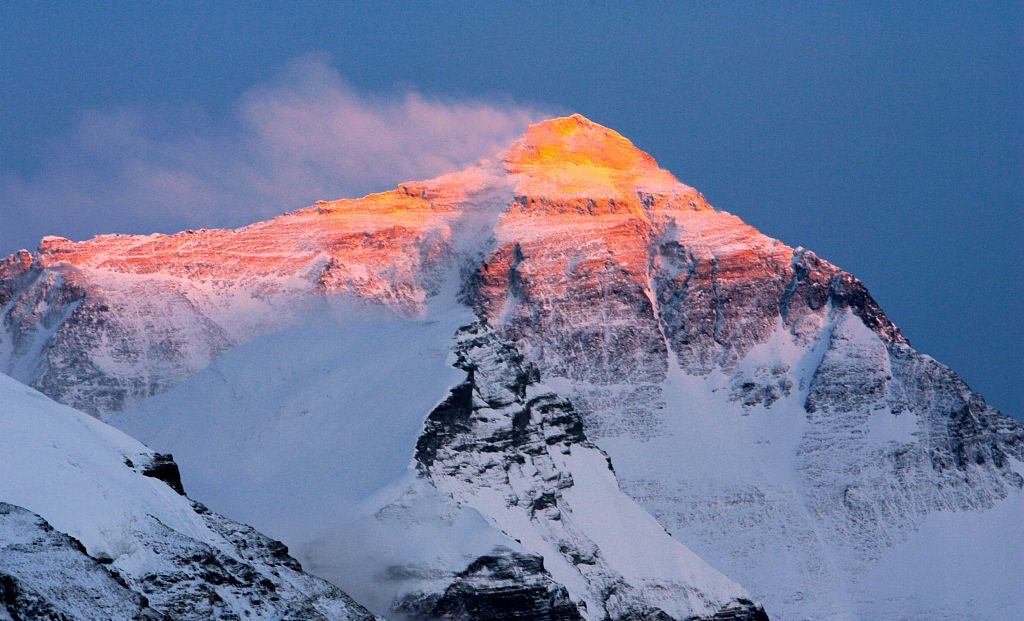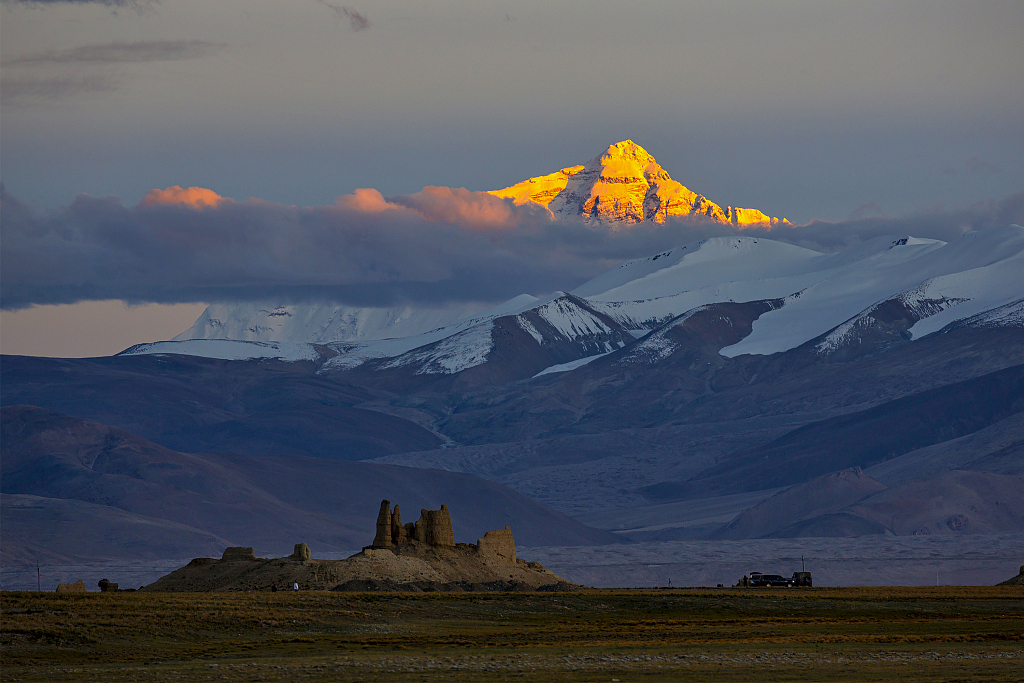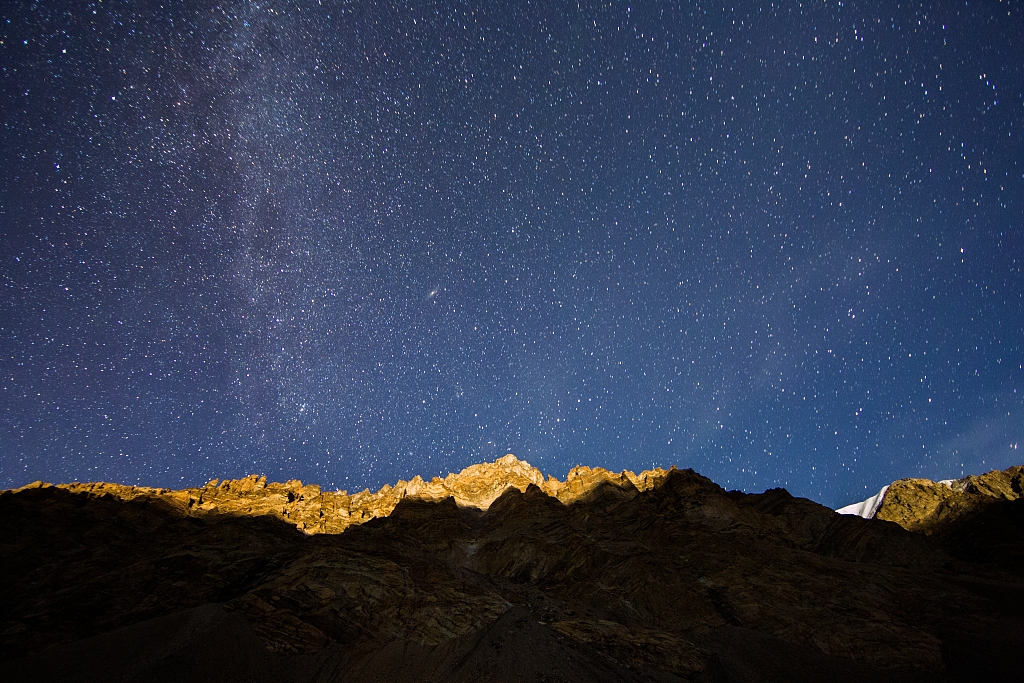China has started a new comprehensive scientific expedition on Mount Qomolangma, the world's highest peak on the China-Nepal border.

An aerial photo shows a view of the Mount Qomolangma base camp at an altitude of 5,200 meters, May 1, 2022. /Xinhua
An aerial photo shows a view of the Mount Qomolangma base camp at an altitude of 5,200 meters, May 1, 2022. /Xinhua
The weather from October to March and April in Mount Qomolangma is really windy. Its rainy season lasts from June to September. So by contrast, the most stable and suitable month for climbing is May. To safeguard the scientific expedition, a meteorological support team has been launched.

Photo taken on May 3, 2022 shows the camp of the meteorological support team for China's new comprehensive scientific expedition on Mount Qomolangma. /Xinhua
Photo taken on May 3, 2022 shows the camp of the meteorological support team for China's new comprehensive scientific expedition on Mount Qomolangma. /Xinhua
The mountain is also known as 'the Third Pole of the Earth.' The top part of the mountain is covered with snow all year around. You can also find bright glaciers and miles of efflorescent rock physiognomy there. It is important in studying the impact of global warming due to its sensitivity to rising temperatures.

Mount Qomolangma shining in the sun. /CFP
Mount Qomolangma shining in the sun. /CFP
The Mount Qomolangma Nature Reserve is also home to many precious species including snow leopard and wild ass. Let's take a look at some amazing photos of the mountain.

Sunset at Mount Qomolangma. /CFP
Sunset at Mount Qomolangma. /CFP

Starry sky above Mount Qomolangma. /CFP
Starry sky above Mount Qomolangma. /CFP
(The cover image via CFP)
(If you want to contribute and have specific expertise, please contact us at nature@cgtn.com.)

